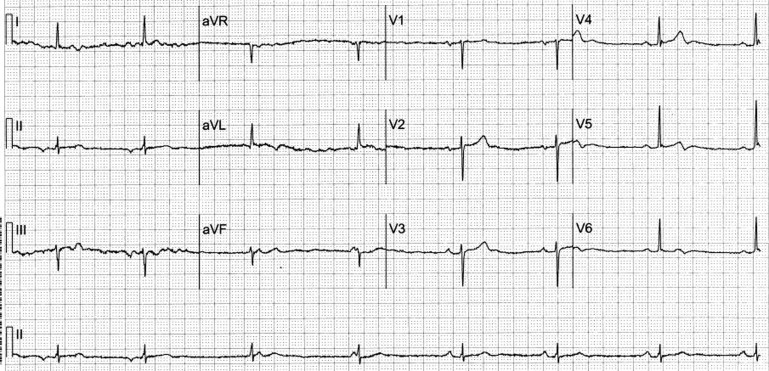A 64-year-old man with no cardiac history presented with chest pain. His troponin I was undetectable, and he was discharged for further cardiac workup as an outpatient.
The presenting electrocardiogram begins with a sinus pause and 2 supraventricular escape complexes ( Figure 1 ). The third and fourth QRS complexes are junctional escape complexes that are dissociated from the first 2 P waves of a run of sinus bradycardia and arrhythmia. The last 4 sinus P waves are conducted to the ventricles. Sinus bradycardia may be the result of excessive vagal tone or sinus node disease. Either way, in the absence of symptoms of hemodynamic compromise, no specific treatment is required.

Baseline artifact is prominent in the limb leads obscuring ST-T morphology, but terminal T-wave inversion is clearly visible in leads V 5 and V 6 . Such terminal T-wave inversion would be a more compelling sign of ischemia in leads V 1 to V 3. In leads V 5 to V 6 , it is a nonspecific abnormality. With a contemporary troponin assay, a troponin level that remains below the ninety-ninth percentile cutoff (<0.03 ng/ml) on serial measurements is associated with a very low risk of coronary events at 30 days (<0.5%). This is particularly true when troponin remains below detection level (<0.01 ng/ml). As a result, the emergency physician decided to discharge the patient and arrange for outpatient stress testing within 72 hours of discharge.
Disclosures
The authors have no conflicts of interest to disclose.
See page 1166 for disclosure information.
Stay updated, free articles. Join our Telegram channel

Full access? Get Clinical Tree


